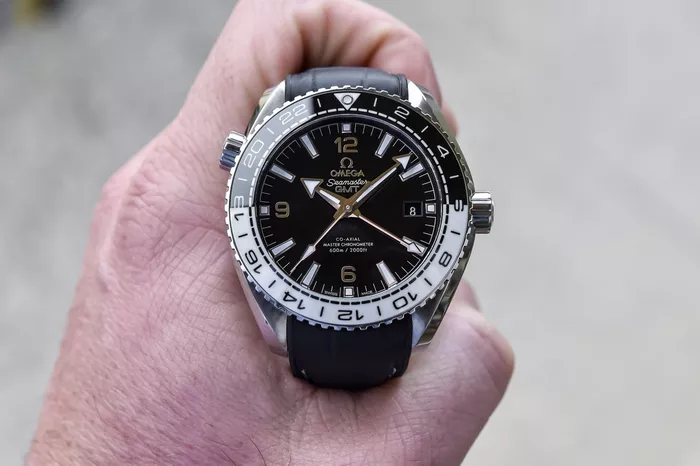The Omega Seamaster is a renowned line of watches that epitomizes luxury, precision, and durability. One of the essential components of this iconic timepiece is its strap. Choosing the correct strap size is crucial for comfort, aesthetics, and functionality. This article provides a comprehensive guide on selecting the right strap size for your Omega Seamaster, ensuring that you make an informed decision that complements your watch and suits your personal style.
Understanding Omega Seamaster Models
The Omega Seamaster series includes various models, each with its unique specifications. Understanding these models is the first step in determining the correct strap size.
Seamaster Diver 300M: Known for its robust build and diving capabilities.
Seamaster Planet Ocean: Offers a larger, sportier design with enhanced water resistance.
Seamaster Aqua Terra: Features a more elegant and versatile look, suitable for both casual and formal occasions.
Seamaster Railmaster: Combines classic design with anti-magnetic properties.
Each model may have different lug widths and case sizes, influencing the strap size you need.
Measuring the Lug Width
The lug width is the distance between the two lugs on the watch case where the strap attaches. It is crucial to measure this width accurately to ensure a proper fit.
Use a Digital Caliper: For the most precise measurement, use a digital caliper to measure the lug width in millimeters.
Refer to the Manufacturer’s Specifications: Omega provides detailed specifications for each model on their official website, including lug width.
Common Lug Widths:
Seamaster Diver 300M: Typically 20mm or 22mm.
Seamaster Planet Ocean: Often 20mm, 22mm, or 24mm depending on the case size.
Seamaster Aqua Terra: Commonly 19mm, 20mm, or 21mm.
Seamaster Railmaster: Usually 20mm.
Selecting the Strap Length
Strap length is another critical factor to consider, ensuring the strap comfortably fits your wrist. Omega straps generally come in standard lengths, but custom lengths are also available.
Measure Your Wrist: Use a flexible measuring tape to measure the circumference of your wrist.
Standard Strap Lengths:
Small (110mm/70mm): Suitable for smaller wrists.
Medium (120mm/80mm): Fits average wrist sizes.
Large (130mm/90mm): Ideal for larger wrists.
Custom Lengths: If you have a wrist size that falls outside standard lengths, consider ordering a custom strap.
Choosing the Strap Material
Omega offers a variety of strap materials, each with distinct characteristics. Your choice of material can affect both the look and feel of your watch.
Leather Straps:
Offer a classic and sophisticated appearance.
Comfortable and flexible.
Available in various colors and textures.
Metal Bracelets:
Provide a robust and sporty look.
Highly durable and water-resistant.
Usually made of stainless steel or titanium.
Rubber Straps:
Ideal for water activities and sports.
Highly resistant to sweat and water.
Comfortable for extended wear.
NATO Straps:
Versatile and casual.
Easy to change and adjust.
Available in numerous colors and patterns.
Considering the Buckle Type
The buckle is an essential component of the strap, affecting both functionality and aesthetics.
Pin Buckle:
Traditional and simple design.
Easy to adjust.
Commonly used with leather and NATO straps.
Deployant Clasp:
Offers a more secure fit.
Often found on metal bracelets and high-end leather straps.
Provides a seamless look when closed.
Folding Clasp:
Combines the benefits of a deployant clasp with additional security.
Suitable for both leather and metal straps.
Enhances the overall durability of the strap.
See Also: Where Is The Serial Number On An Omega Seamaster
Matching the Strap to Your Style
Choosing a strap that complements your personal style and the occasion is essential.
Casual Wear:
NATO straps and rubber straps are perfect for casual and sporty outfits.
Leather straps with a matte finish can also provide a laid-back yet refined look.
Formal Events:
Glossy leather straps or metal bracelets are ideal for formal occasions.
Choose neutral colors like black, brown, or silver for a sophisticated appearance.
Everyday Use:
Versatile straps like the Seamaster Aqua Terra’s leather or metal options work well for daily wear.
Consider durability and comfort for all-day wear.
Maintaining Your Strap
Proper maintenance can prolong the life of your strap and keep it looking its best.
Leather Straps:
Avoid exposure to water and sweat.
Clean with a damp cloth and condition periodically.
Store in a cool, dry place.
Metal Bracelets:
Clean with mild soap and water.
Use a soft brush to remove dirt and debris.
Dry thoroughly to prevent water spots.
Rubber Straps:
Rinse with water after exposure to saltwater or chlorine.
Clean with mild soap if necessary.
Avoid prolonged exposure to direct sunlight.
NATO Straps:
Machine washable for easy cleaning.
Air dry to prevent shrinking.
Rotate between straps to reduce wear and tear.
Conclusion
Selecting the right strap size for your Omega Seamaster involves careful consideration of several factors, including lug width, strap length, material, and buckle type. By understanding your watch model and personal preferences, you can choose a strap that enhances both the functionality and aesthetics of your timepiece. Whether you opt for a classic leather strap, a durable metal bracelet, or a versatile NATO strap, the right choice will ensure your Omega Seamaster remains a stylish and comfortable companion for years to come.

